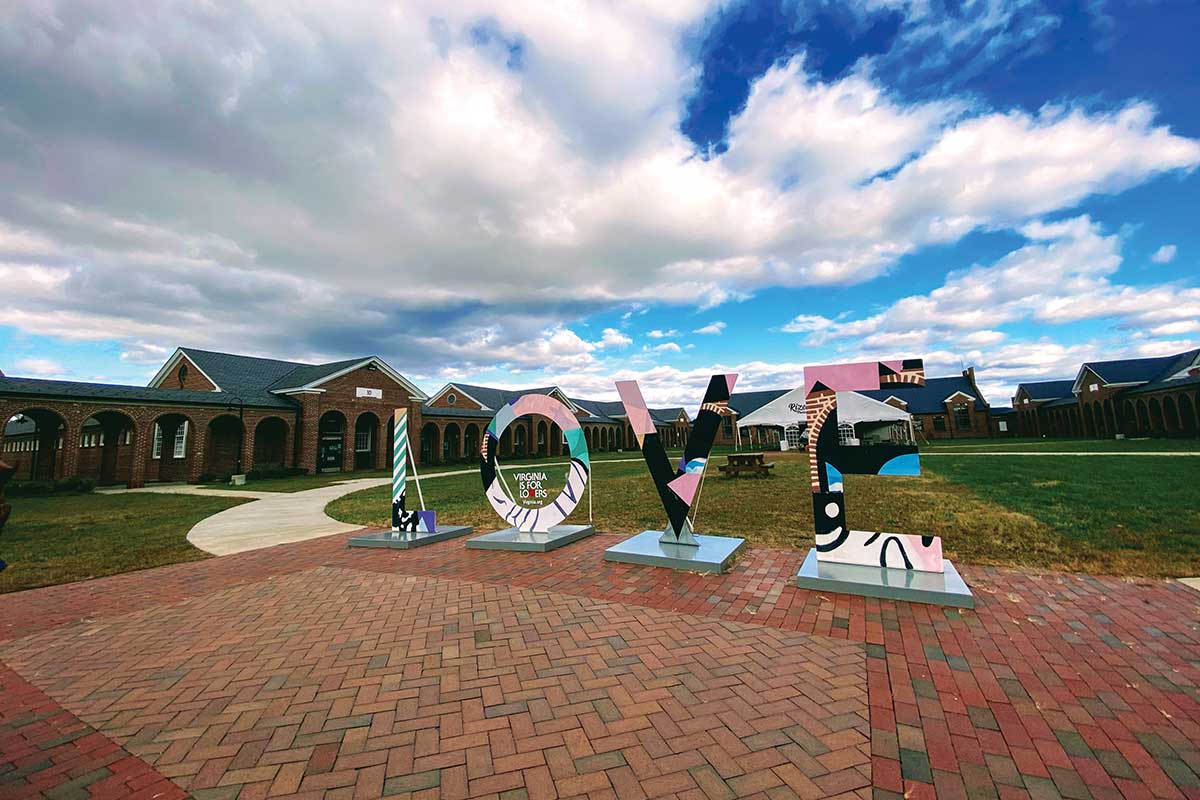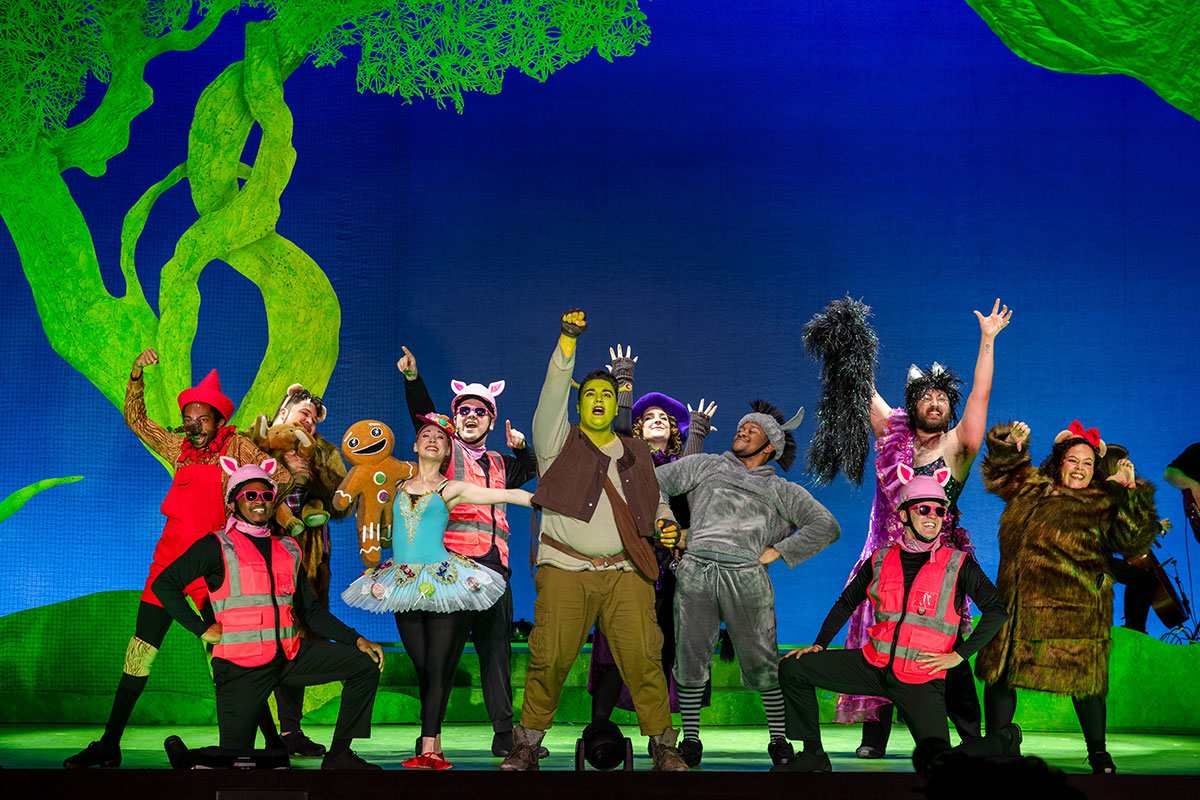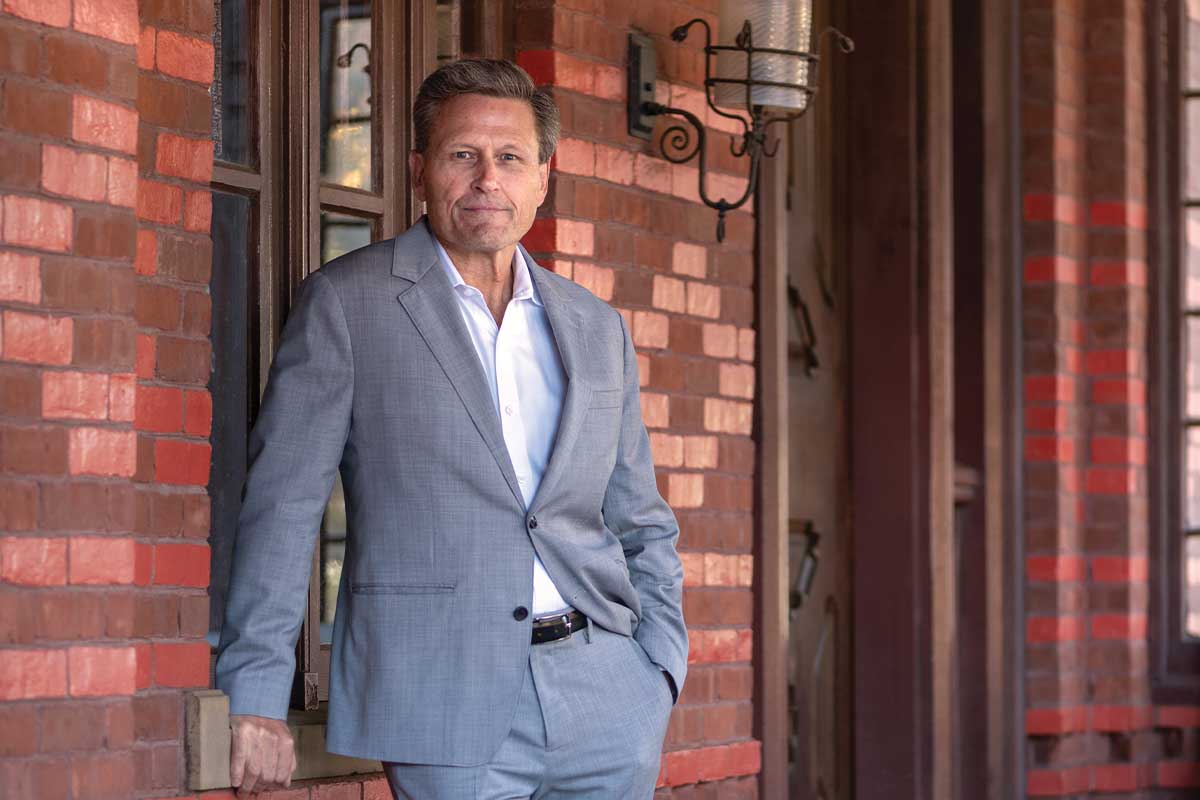The Workhouse Arts Center in Lorton is real-life proof of the adage that everything old is new again. The refurbished former prison, which officially closed two decades ago, now hosts community performing and visual arts events, classes, and studios for artists. Once called “part Torpedo Factory, part Wolf Trap” by The Washington Post, it’s poised for even bigger things: Its first retail businesses are coming, in addition to a relatively new apartment complex.
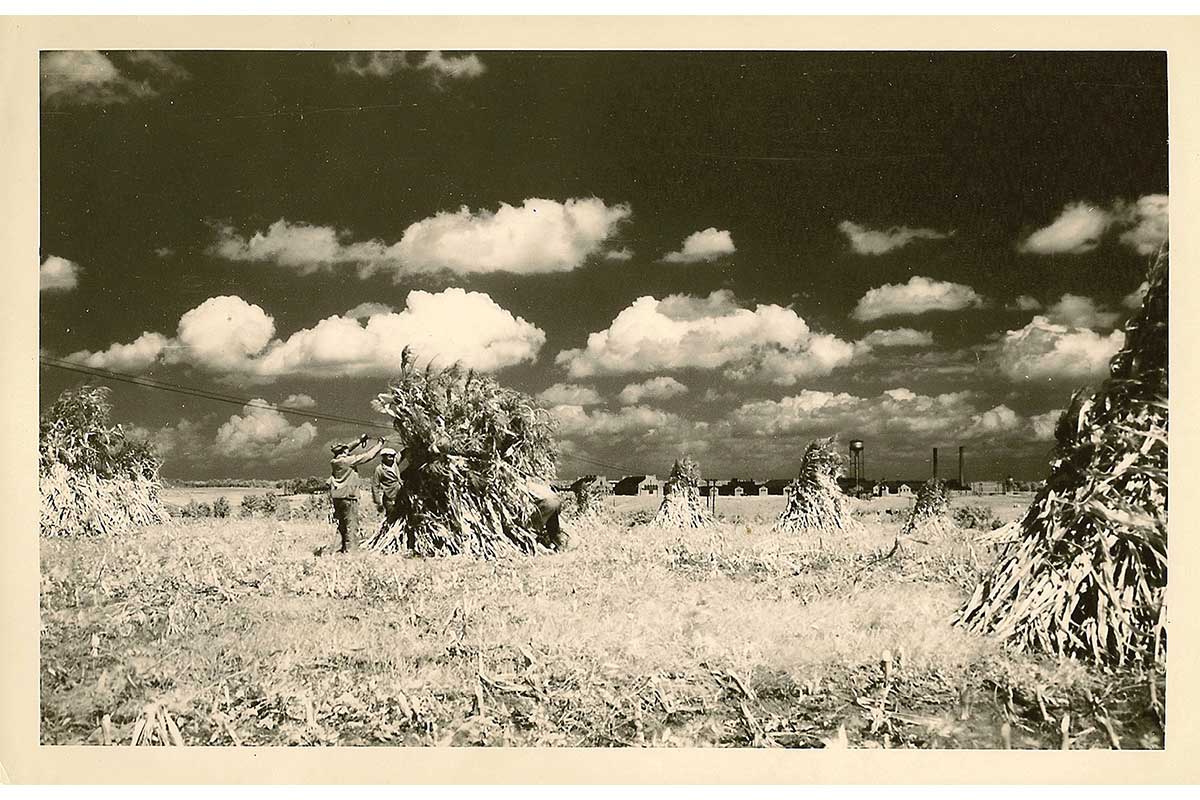
History
More than a century ago, a penal commission established by President Theodore Roosevelt created a new prison unlike almost any other in the country at the time. With more than 1,000 acres, the institution was designed with an open feel more akin to a college campus, rather than the more punitive prisons predominant in that era. The facility was aimed more at rehabilitation than punishment, with prisoners working on a farm, making bricks, and producing goods for sale. After all, most of the prisoners it housed were convicted on nonviolent charges like public intoxication.
Originally named Occoquan Workhouse after the nearby Occoquan River, the prison began operation in 1910 and was later renamed the Lorton Reformatory.
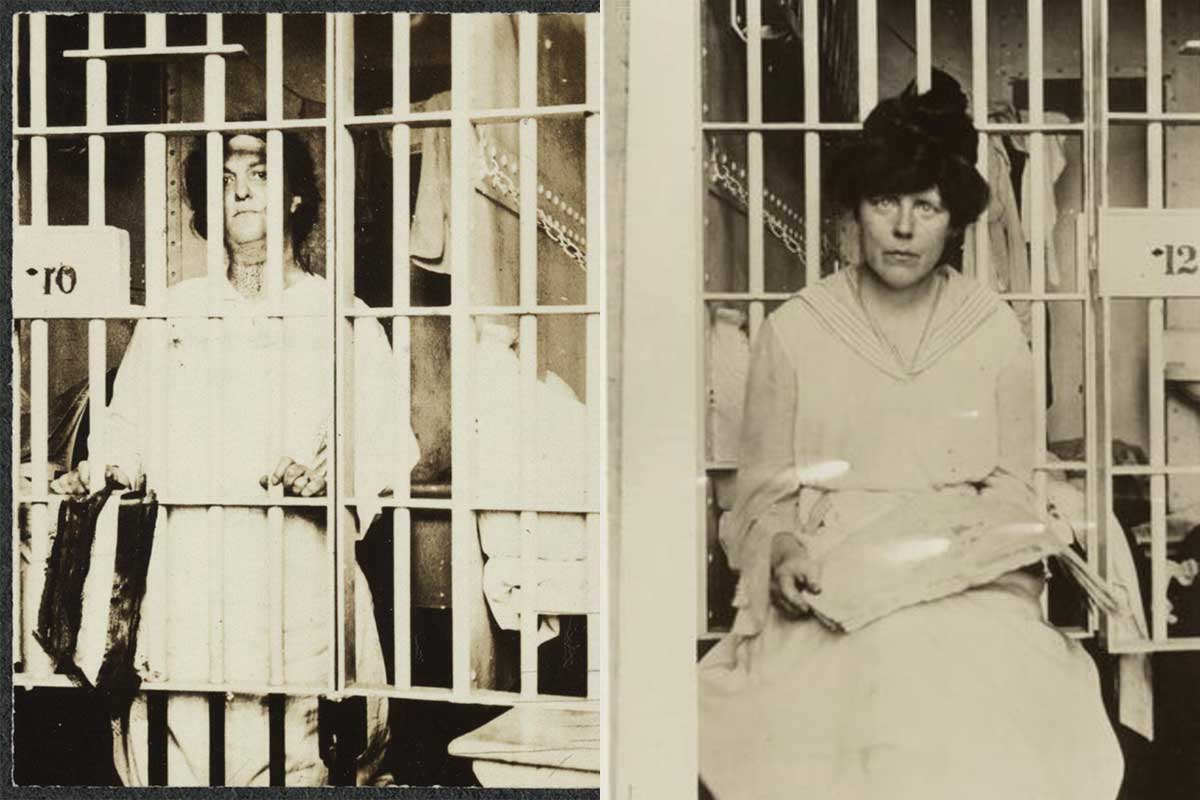
The institution’s lowest moment came in 1917, after more than 100 women were arrested for picketing President Woodrow Wilson outside the White House over his opposition to women’s suffrage. The women were booked on (dubious) charges of obstructing traffic, marking the first-ever picket outside the White House.
The true night of infamy arrived on November 14, when prison warden W.H. Whittaker ordered guards to violently terrorize the imprisoned women. Many of the horrific details were depicted in the 2004 film Iron Jawed Angels, starring Hilary Swank. A few weeks after the violence, a judge vacated the women’s convictions and ordered them released. Wilson would flip positions and announce his support for women’s suffrage the next year, 1918.
Fast forward about eight decades, and the prison’s original reputation for housing nonviolent offenders had changed dramatically. A 1995 Washington Post article called the facility “the District’s most violent prison.” More than 60 percent of inmates had been convicted of violent crimes. Claiming that “the inmates, not the guards, are in charge,” the article cited statistics that from January through October of that year, there had already been two homicides, more than 20 inmate stabbings, about a dozen inmate attacks on staff members, and even one successful escape.
Due to such issues (plus others like overcrowding), the prison was ordered shuttered by Congress in 1997. All inmates were assigned transfer to locations run by the Federal Bureau of Prisons, with the final prisoner transferred out in 2001.
In 2002, the land was sold to Fairfax County. A year later, the county approved a proposal for a public-private partnership called the Workhouse Arts Center on the site, a reference to the prison’s original “workhouse” roots. After several years of planning and rehabilitation, Workhouse opened to the public in 2008. A bustling, creative space was born out of a dark past.
“It’s one of the most exciting opportunities for Fairfax County in my 16 years on the board,” Supervisor Gerald W. Hyland (D-Mount Vernon), whose district includes Lorton, told the Post at the time. “To have a private group with the vision they’ve demonstrated is tremendous, because what they’ll do in a few years would have taken the county 25.”
The Present
These days, the Workhouse hosts hundreds of events and classes each year. Until October 16, it is hosting an exhibit called Emergence in partnership with the Justice Arts Coalition, which features artwork by currently and formerly incarcerated people, inviting viewers to “consider what is possible by reclaiming a space created for captivity and transforming it into a place of creative possibilities.”
Its single most popular event is the annual Independence Day fireworks display, which attracts thousands of attendees. It also hosts stand-up comedian performances and concerts, with performers this past summer ranging in genres from country to soul to brass bands and a cappella.
Every October for Halloween, the center constructs an elaborate haunted walking trail called the Nightmare Harvest. “It’s a former prison, so that air gives it its own eerie vibe,” says Ali Morris, the destination marketing manager for Visit Fairfax.
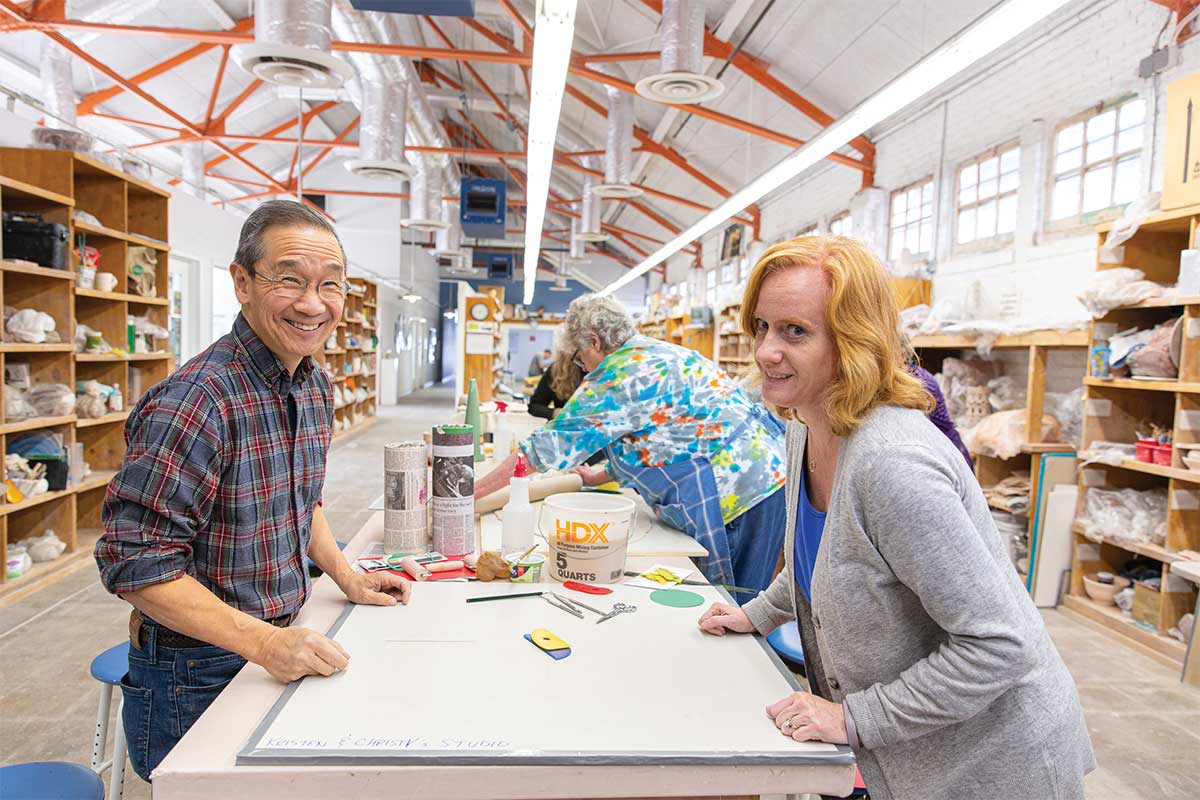
The Workhouse also offers classes for all ages, including: cooking, with classes covering topics like kimchi, kombucha, and herbal infusions; music, including lessons on composition and songwriting, guitar, piano, flute, violin, viola, voice, cello, and double bass; crafting physical objects, including classes on making jewelry, textiles, and clay pottery; exercise, including Pilates, tai chi, and ballroom dancing; and art therapy, including the Military in the Arts Initiative, which includes tuition assistance for eligible servicemembers and veterans.
The Workhouse also offers low-cost studios and creative spaces for more than 100 artists. (One is the synesthetic artist Britt Conley, whom this publication profiled in the February issue.) “I love to get out during my lunch hour, walk through the buildings, meet with the artists, see how they’re creating their art,” Workhouse Arts Foundation’s President and CEO Leon Scioscia says. “It’s pretty phenomenal.”
Asked to name three artists who have recently caught his attention, Scioscia, taking care to note that these were just the initial names that popped into his head, cited photographer Mike Stevens; Wendy Anderson, who does painting, sculpture, and jewelry; and Laura Bruce, who works across oils, acrylics, pastels, colored pencils, and stained glass. The variety of media formats utilized by these 100-plus artists is indeed vast. One staff member even has the job title of director of glass and ceramics.
Two onsite museums also bring history to life.
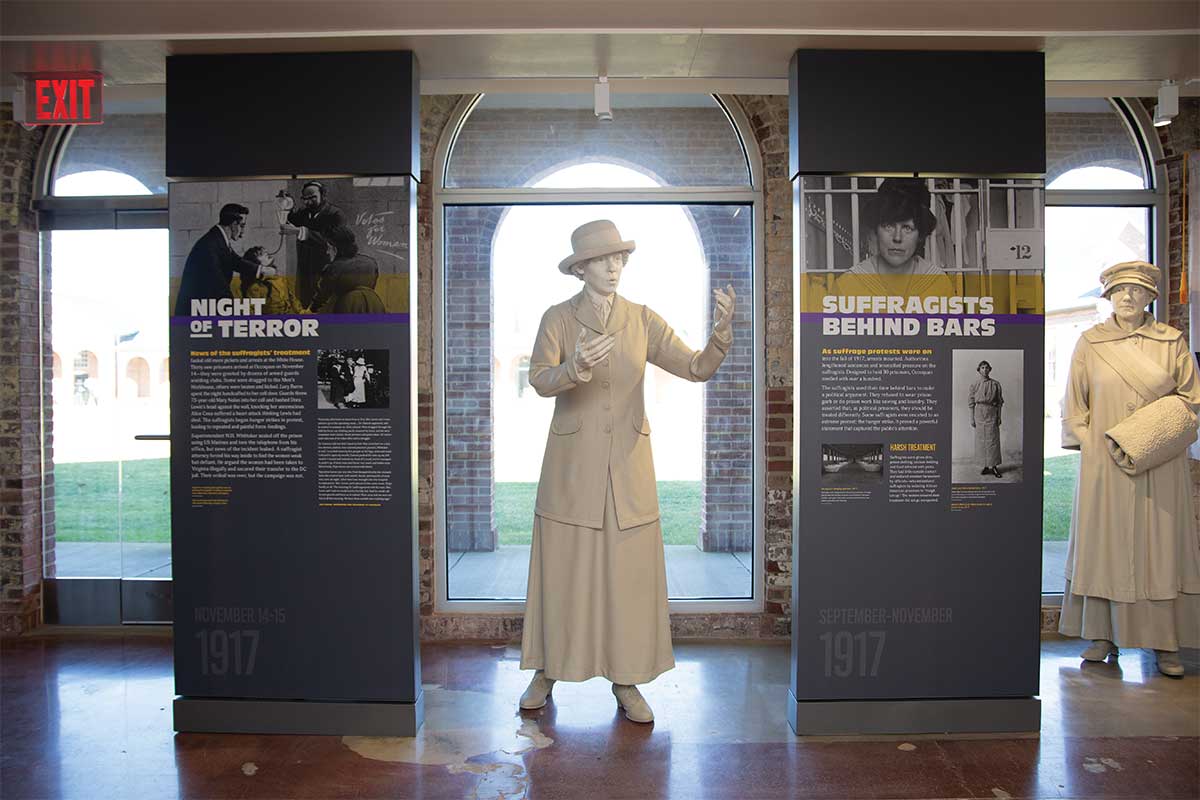
Named for one of the arrested suffragette protesters, the Lucy Burns Museum tells the tale of the prison’s history. Open Fridays, Saturdays, and Sundays, it offers a package called the Guided Cellblock Tour. At least for a time, the museum even employed some docents who had previously served as correctional officers there.
Opened in 2021, the Turning Point Suffragist Memorial is devoted to the history of the women’s suffrage movement. After taking 13 years from initial concept to the actual opening last year, the memorial now contains 19 informational stations in honor of the 19th Amendment, which granted women the right to vote nationwide. The memorial even contains the actual segment of the 1917-era White House fence in front of which the arrested protesters picketed.
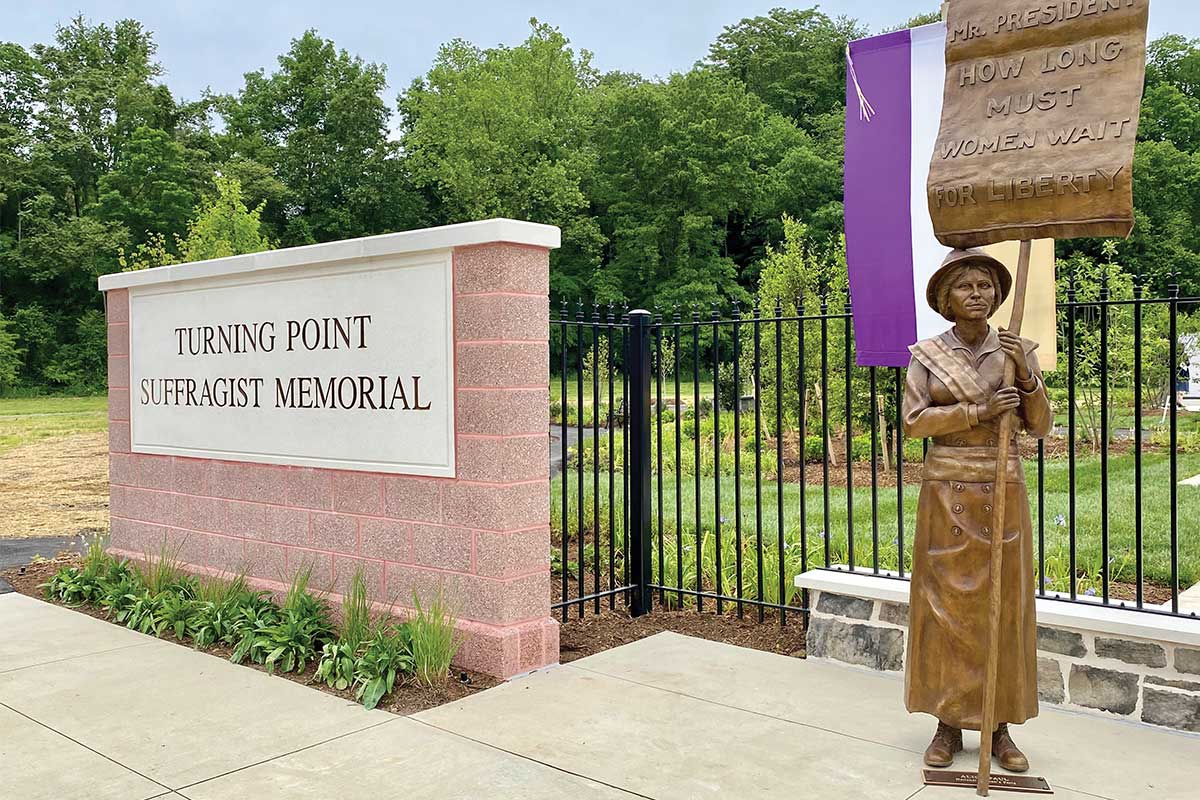
The apartment complex Liberty Crest Apartments opened on the site in the late 2010s, repurposing some of the prison’s old guard towers. Its homepage promotes the site’s history as part of the appeal, featuring phrases like “set in the footprint of a historic reformatory” and “discover the irresistible mix of old and new.”
The Future
The Workhouse is run by the nonprofit 501(c)(3) Workhouse Arts Foundation. “We’re very fortunate to be a private-public partnership,” says Scioscia, who has a decades-long history of working with prominent DC-area arts institutions, including other private-public partnerships, such as the Kennedy Center, where he worked for 12 years and the Strathmore in Bethesda, where he spent six.
The Workhouse’s actual facilities are owned by Fairfax County, which provides for all the maintenance, capital building, and improvements. Any capital improvement is funded by a combination of private fundraising, money from the county, plus a federal historic tax credit from the site’s inclusion on the National Register of Historic Places. But the county provides the actual facilities to the nonprofit foundation to run as they see fit. The foundation accepts tax-deductible individual donations, memberships, and corporate giving.
The Workhouse’s annual gala fundraiser on September 17 will be headlined by a performance from Bruce Hornsby, most famous for his 1986 Billboard No. 1 song “The Way It Is.” Fairfax County is currently renovating two of the buildings onsite, which will become a restaurant and a brewery in early 2023. Other businesses could pop up in the years ahead, depending on the success of the original two, says Scioscia.
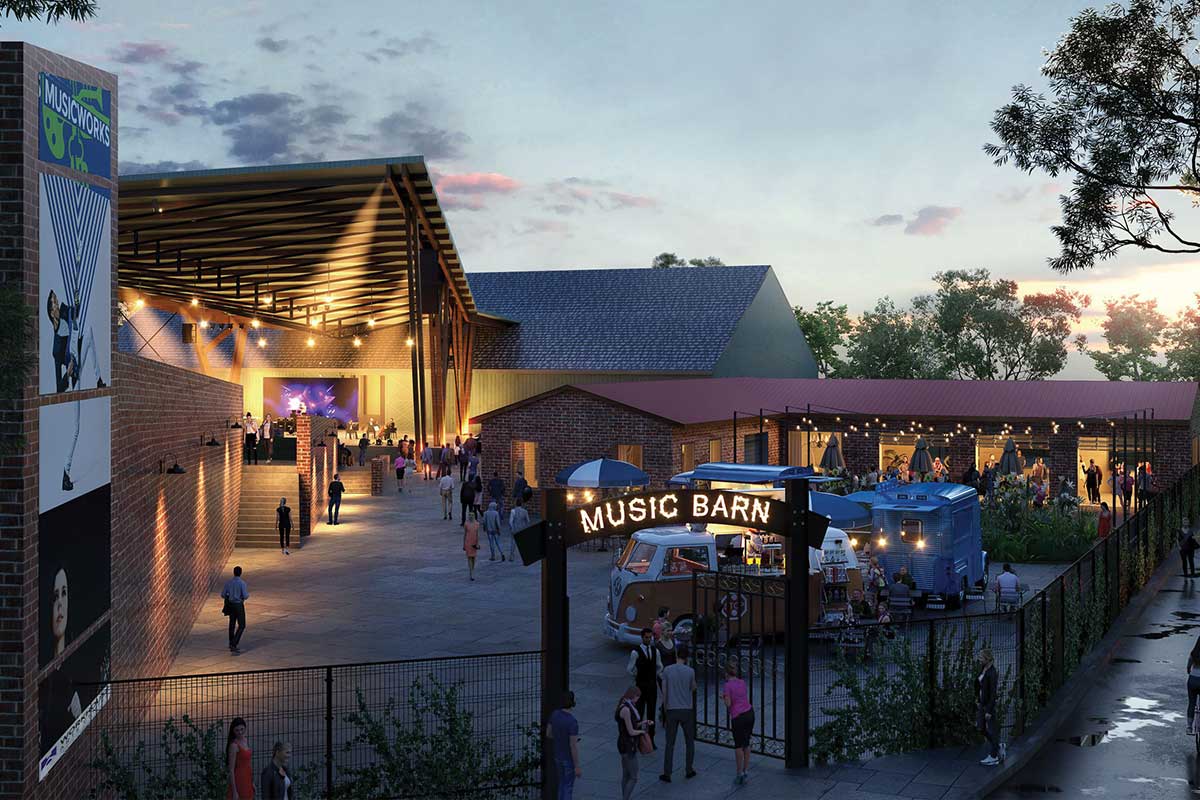
Other ideas for the area abound. One is to build more housing, potentially including low-income housing, which could allow some of the artists who already work there to live there as well. Four longer-term initiatives are also in various stages of planning or design: a 3,000-seat outdoor entertainment amphitheater, a large-scale indoor space for weddings and corporate events, an educational center, and an indoor theater.
“One building on our campus, when first built, was actually constructed as a theater. They had a theater on a prison campus!” Scioscia says.
Scioscia hopes that making the campus more of a full-fledged destination for arts and commerce will help Fairfax County compete with the giant metropolis just north on the map.
“We want to bring the Workhouse to a place where it becomes an anchor for Fairfax County, which we just rebranded as Potomac Banks, and even Prince William County half a mile down the road,” Scioscia says. “Lorton is only 12 miles south of the District. Some people act like it’s in Richmond, but it’s not.” While the location is not Metro-accessible, it’s only about 9 miles southwest of the Franconia-Springfield station, the last stop on the Blue Line.
“I look at DC as a benefit, honestly,” Morris says. “People are flying into Virginia through Reagan or Dulles [airports]. They can stay in Fairfax County more affordably and take a Metro or rideshare into DC. It’s a complementary experience. In DC, you visit the Washington Monument, then you go back across the Potomac and visit Mount Vernon,” George Washington’s home.
If all goes according to plan, a lot more of them will start visiting the Workhouse Arts Center, too.
This story originally ran in our October issue. For more stories like this, subscribe to our monthly magazine.

